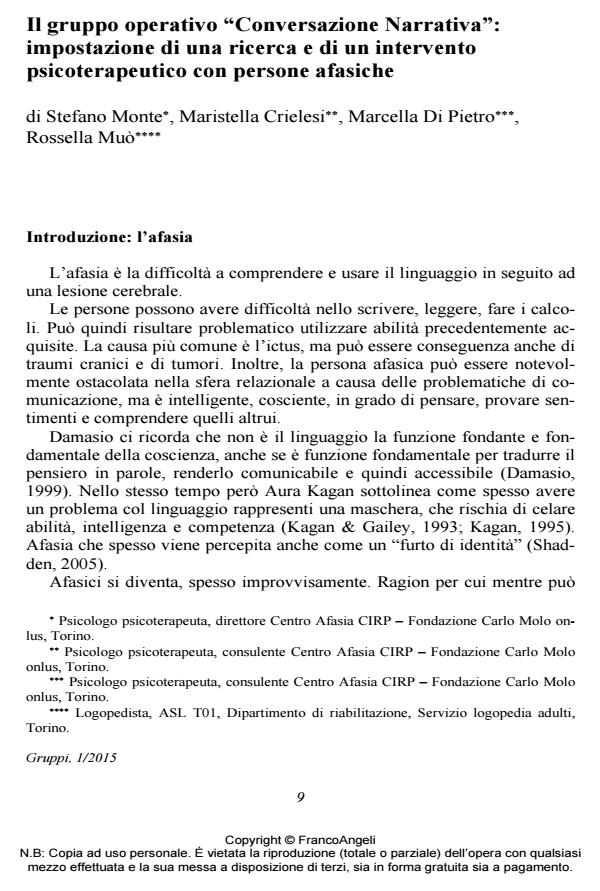The operative group "Conversazione Narrativa": setting a psychotherapeutic research and intervention for aphasic people
Journal title GRUPPI
Author/s Stefano Monte, Maristella Crielesi, Marcella Di Pietro, Rossella Muò
Publishing Year 2015 Issue 2015/1
Language Italian Pages 20 P. 9-28 File size 102 KB
DOI 10.3280/GRU2015-001002
DOI is like a bar code for intellectual property: to have more infomation
click here
Below, you can see the article first page
If you want to buy this article in PDF format, you can do it, following the instructions to buy download credits

FrancoAngeli is member of Publishers International Linking Association, Inc (PILA), a not-for-profit association which run the CrossRef service enabling links to and from online scholarly content.
The term "aphasia’" describes a difficulty understanding and using language, secondary to an acquired brain injury (ABI). People with aphasia may have problems with speaking, understanding, writing, reading and counting. The most common cause of aphasia is stroke, but it can also be the result of traumatic brain injury or brain tumours. People with aphasia can encounter significant difficulties in a relational sphere because of communication problems, but they are intelligent, conscious, able to think, to feel emotions and understand the other’s feelings. Psychotherapy, in our clinical experience, is a tool that may help survivors and caregivers to reposition on the existential continuum interrupted by illness. The purpose of this paper is to present one of the psychotherapeutic intervention groups of Centro Afasia CIRP - Fondazione Carlo Molo Onlus. The focus will be on the process of intervention and on the research design of a psychotherapeutic group designed for people with aphasia. It will principally describe the preliminary stages of the intervention, the research: the method, the assessment of needs, the data collection, and the aims of the intervention.
Keywords: Aphasia, communication, change, psychotherapy and rehabilitation, operative group, clinical process.
Stefano Monte, Maristella Crielesi, Marcella Di Pietro, Rossella Muò, Il gruppo operativo "Conversazione Narrativa": impostazione di una ricerca e di un intervento psicoterapeutico con persone afasiche in "GRUPPI" 1/2015, pp 9-28, DOI: 10.3280/GRU2015-001002